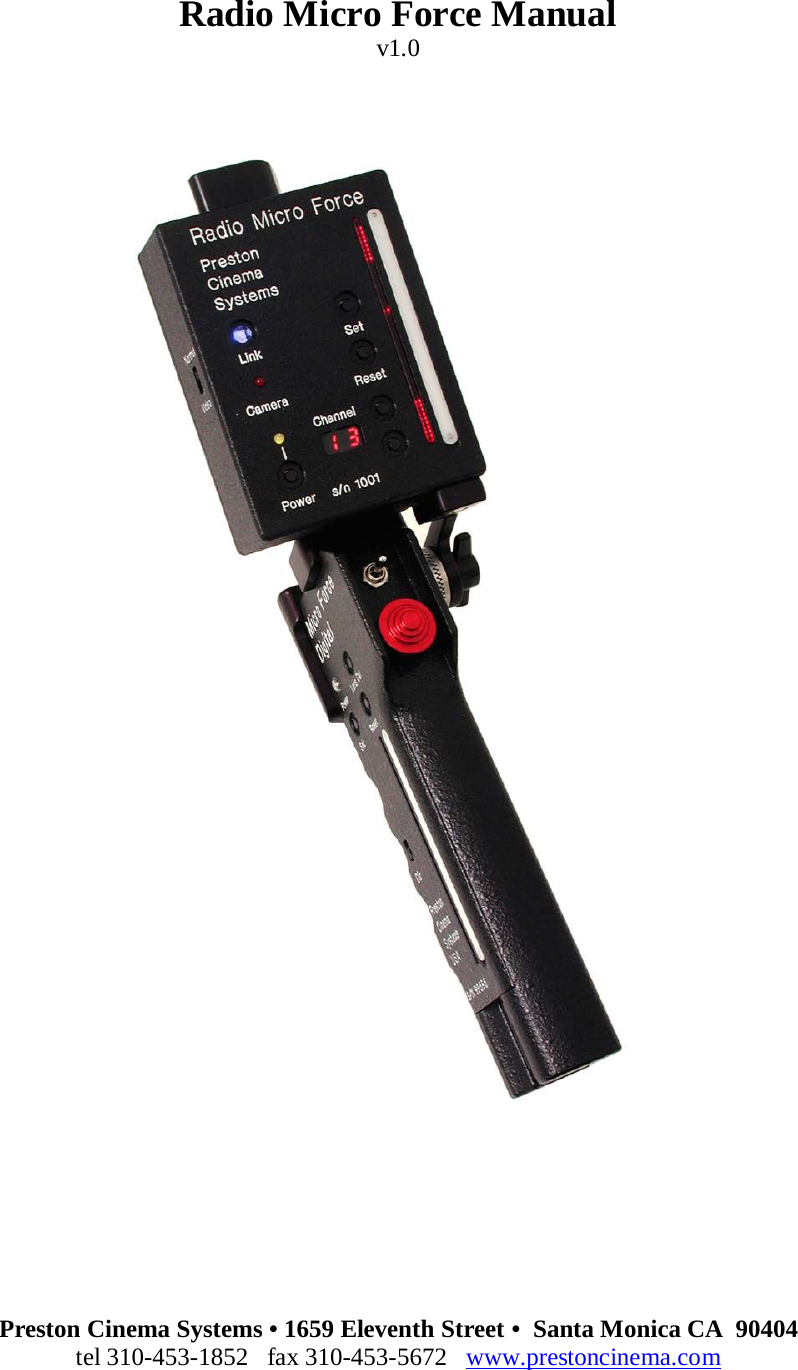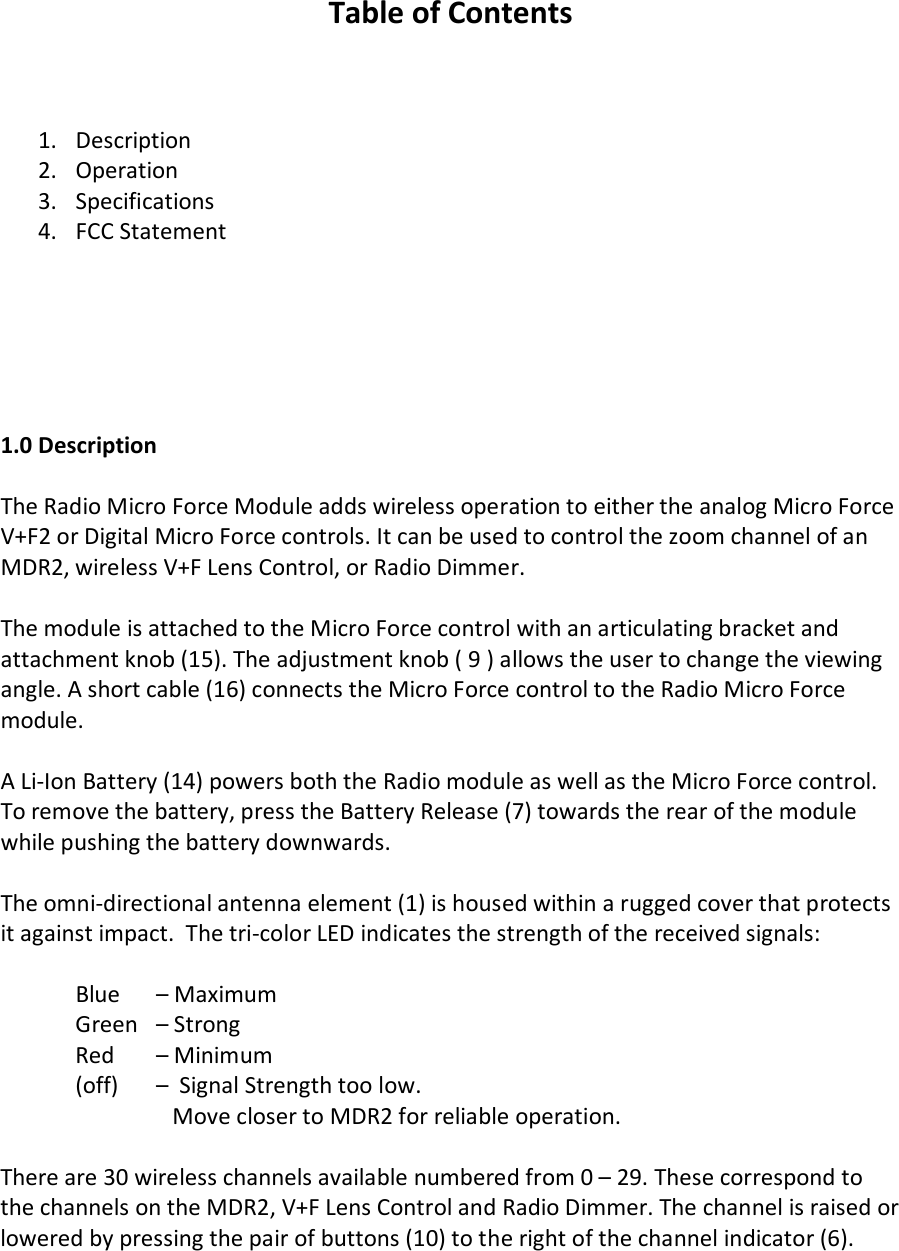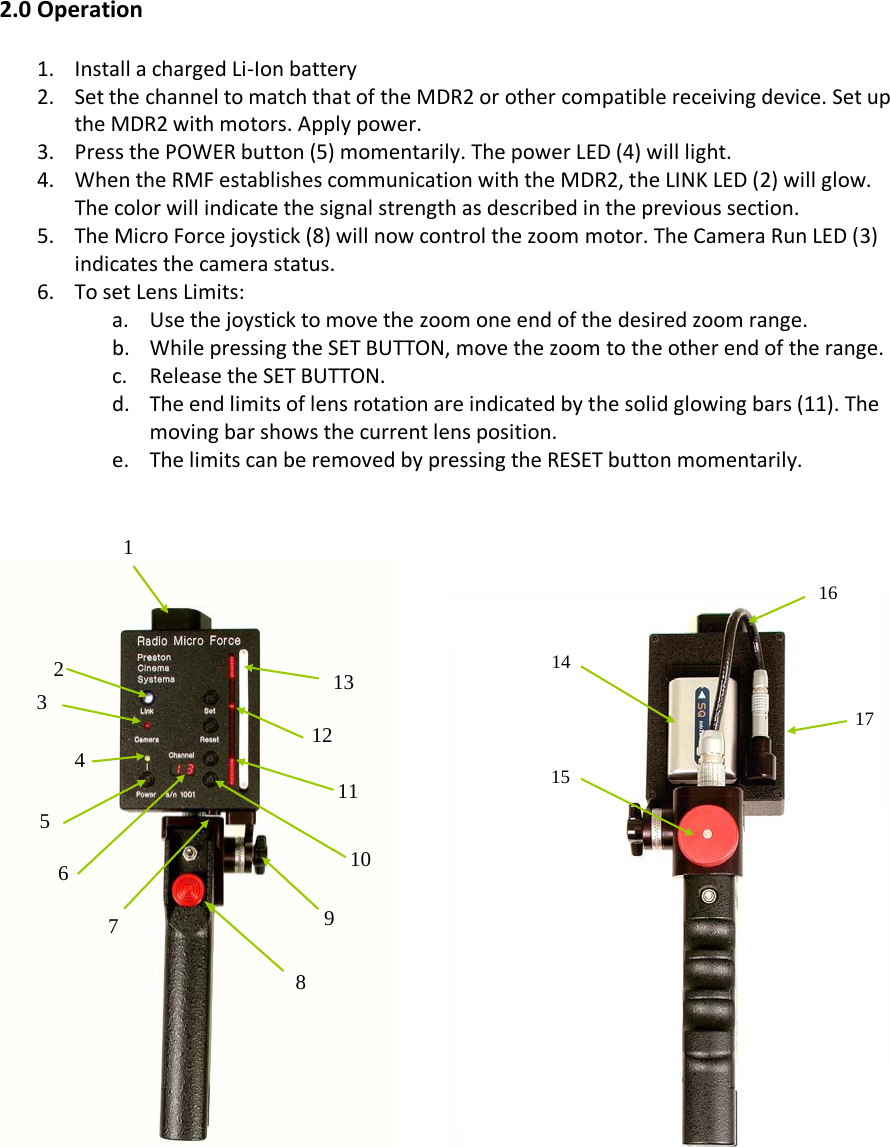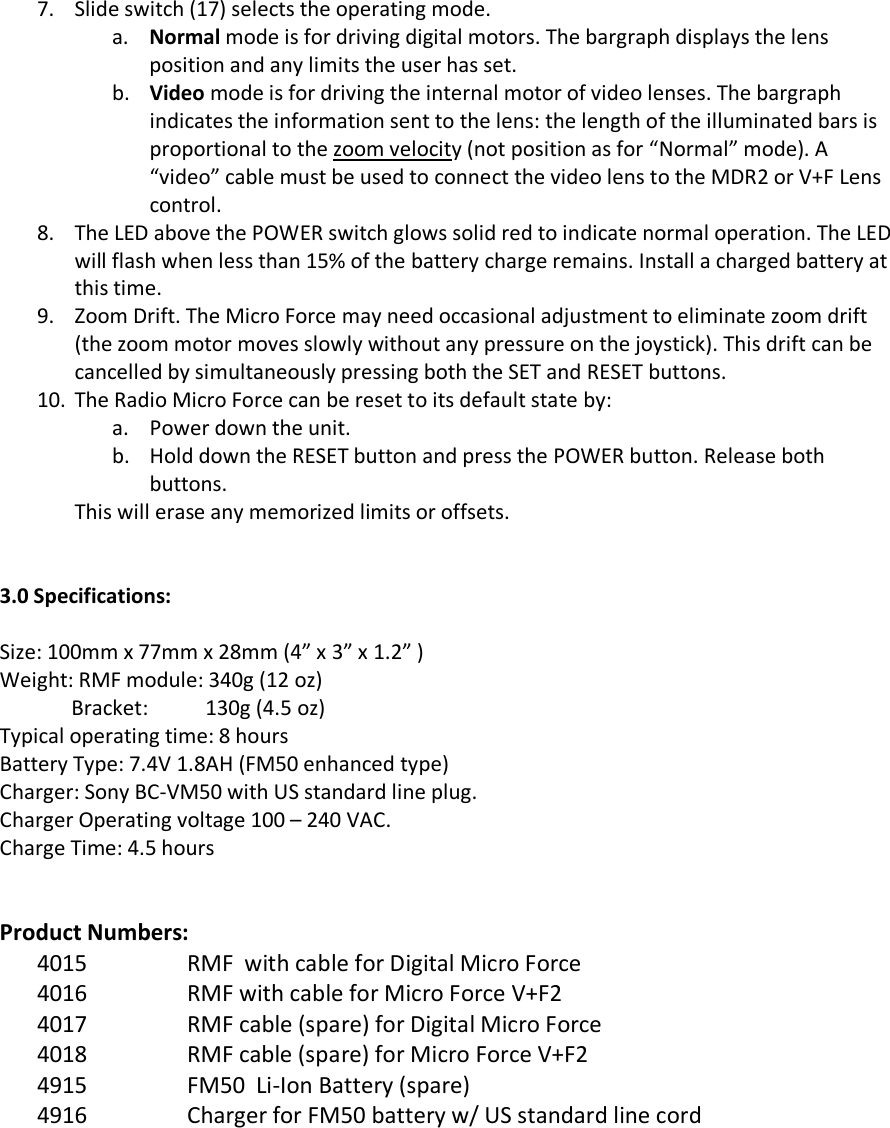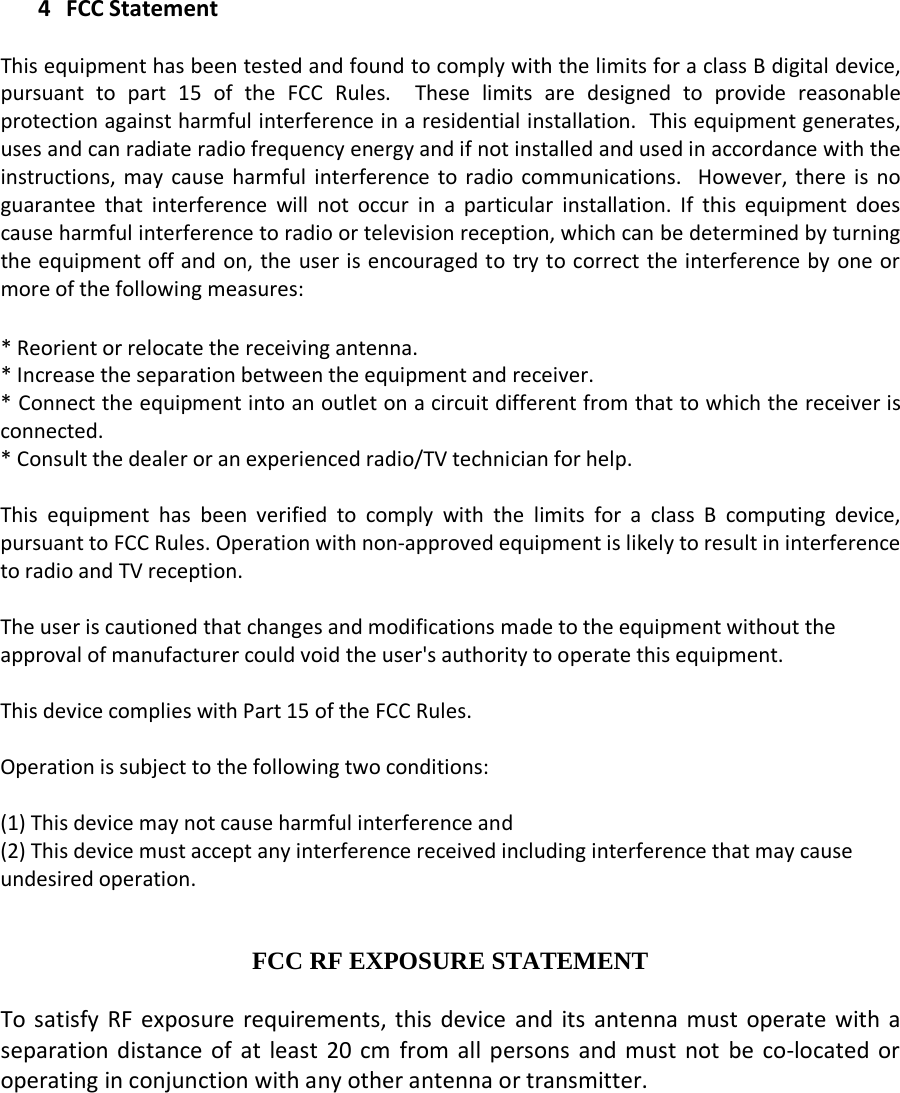Preston Cinema Systems TR41 2.4 GHz Transceiver Module User Manual Radio Micro Force Manual
Preston Cinema Systems Inc 2.4 GHz Transceiver Module Radio Micro Force Manual
Contents
- 1. Users Manual 1
- 2. Users Manual 2
- 3. Users Manual 3
- 4. Users Manual 4
Users Manual 3
